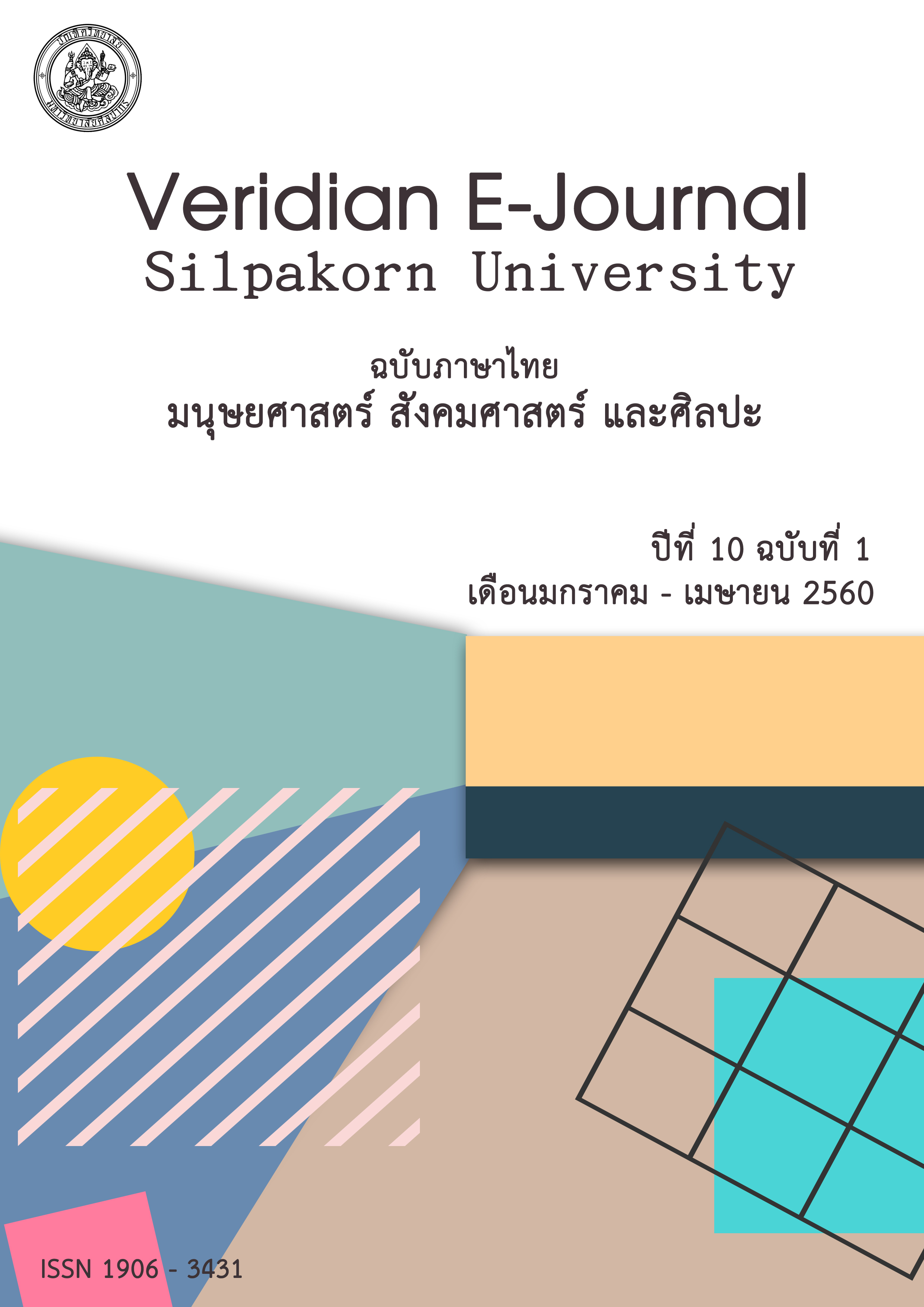การพัฒนารูปแบบการสอนงานสำหรับผู้บริหารสายปฏิบัติการธุรกิจค้าปลีก
Main Article Content
Abstract
การวิจัยครั้งนี้เป็นดำเนินการวิจัยในลักษณะของการวิจัยและพัฒนา(Researchand Development)มีจุดมุ่งหมาย 1.เพื่อพัฒนารูปแบบการสอนงานสำหรับผู้บริหารธุรกิจสายปฏิบัติการธุรกิจค้าปลีก 2.เพื่อหาประสิทธิภาพของรูปแบบการสอนงานสำหรับผู้บริหารสายปฏิบัติการธุรกิจค้าปลีกตามเกณฑ์ 85/85 3.เพื่อทดลองใช้รูปแบบการสอนงานสำหรับผู้บริหารสายปฏิบัติการธุรกิจค้าปลีก 4.เพื่อประเมินผลของรูปแบบการสอนงานสำหรับผู้บริหารสายปฏิบัติการธุรกิจค้าปลีกกลุ่มตัวอย่างที่ใช้แบ่งเป็น 1) กลุ่มตัวอย่างเพื่อศึกษาสภาพปัญหา และความต้องการโดยการใช้แบบสอบถามที่สร้างจากศึกษาเอกสารและงานวิจัย จำนวน 108 คน 2) กลุ่มตัวอย่างในการหาประสิทธิภาพของรูปแบบการสอนงานสำหรับผู้บริหารสายปฏิบัติการธุรกิจค้าปลีก จำนวน 30 คน โดยทำการทดลองแบบภาคสนาม (Field Test) และ 3) กลุ่มตัวอย่างเพื่อทดลองใช้และประเมินผลของรูปแบบการสอนงานสำหรับผู้บริหารสายปฏิบัติการค้าปลีก จำนวน 30 คน การวิเคราะห์ข้อมูลโดยการหาร้อยละ ค่าเฉลี่ย และส่วนเบี่ยงเบนมาตรฐาน เปรียบเทียบผลสัมฤทธิ์ทางการเรียนก่อนและหลังเรียน โดยการหา t-testfor dependent samples ผลการวิจัยสรุปได้ดังนี้ 1) ชื่อรูปแบบคือ PTSPT Coaching Model มี 2 องค์ประกอบหลัก ได้แก่ 1.องค์ประกอบด้านกระบวนการ ซึ่งประกอบด้วยการเตรียมการ เนื้อหาและการเรียนรู้ การฝึกปฏิบัติ และการประเมินและติดตามผล และ 2.องค์ประกอบ ด้านบทบาท ประกอบด้วย บทบาทผู้ประสานสัมพันธ์(Coordinator) บทบาทผู้สร้างแรงจูงใจ (Motivator) และบทบาทผู้สอน/ผู้ถ่ายทอดความรู้ (Trainer) 2)ผลการหาประสิทธิภาพของรูปแบบการสอนงานสำหรับผู้บริหารสายปฏิบัติการธุรกิจค้าปลีก มีประสิทธิภาพเท่ากับ 86.22/87.78 เป็นไปตามเกณฑ์ที่กำหนดไว้ 85/85 และ 3)ผลการหาประสิทธิผลรูปแบบการสอนงานสำหรับผู้บริหารสายปฏิบัติการธุรกิจค้าปลีก พบว่า 3.1)ผลสัมฤทธิ์ทางการเรียนหลังเรียนตามรูปแบบการสอนงานสำหรับผู้บริหารสายปฏิบัติการธุรกิจค้าปลีกสูงกว่าก่อนเรียนอย่างมีนัยสำคัญทางสถิติที่ระดับ .05 (p<.05) 3.2)ผู้เข้ารับการอบรมตามรูปแบบการสอนงานสำหรับผู้บริหารสายปฏิบัติการธุรกิจค้าปลีกมีระดับความพึงพอใจต่อรูปแบบการสอนงานสำหรับผู้บริหารสายปฏิบัติการธุรกิจค้าปลีก โดยรวม อยู่ในระดับมาก ( ̅x= 4.21)
This research and development research was conducted to achieve the following objectives: 1) To develop coaching model for operation executives in retail industries 2) The efficiency meeting the 85/85 criteria; 3) To determine the effectiveness of the model of coaching for executives in retail operation. 4) To evaluate the develop coaching model for operation executives in retail industries. The sample group recruited form the executives in retail operation of Tesco Lotus was divided into a sample group for studies about needs and problem made up of one handles and eight and used to determine the efficiency of the model of coaching for executives in retail operation forty one of executives in retail operation of Tesco Lotus. The experiment was divided into the involved field testing aimed at testing thirty persons in order to determine the efficiency of the model of coaching for executives in retail operation. The other sample group,used to for determine the effectiveness of the model of coaching for executives in retail operation with a total of thirty persons. The data was analyzed by determining percentage, mean and standard deviation. The pre-test and post-test learning outcomes were compared by a determining t-test for the dependent samples. The learning outcomes compared between the pre-test and post-test by a determining independent t-test. The research findings can be summarized as follows: 1. The model of coaching for executives in retail operation is PSTPT Coaching Model. 2. According to the findings, the efficiency of the model of coaching for executives in retail operation was 86.22/87.78, which was higher than the standard criteria of 85/85. 3) The executive in retail operation who studied with model of coaching for executives in retail operation were found to be higher than the pre-test score with a statistical significance of .05 (p<.05) 4) The executive in retail operation who studied with model of coaching for executives in retail operation had a high level of satisfaction concerning the internet-based CAI simulation ( ̅x = 4.21).
